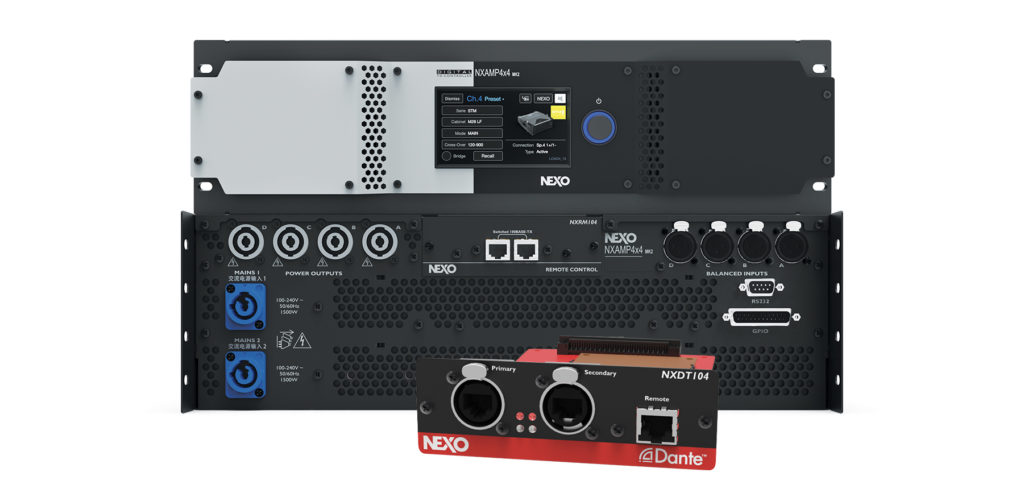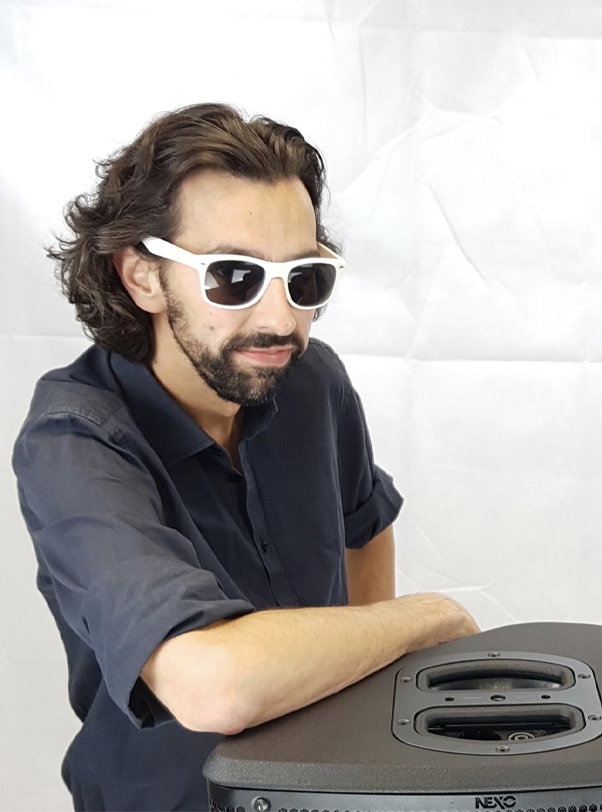#nexosound
#nexolife
Part 6
NEXO’s flagship amplifiers, the NXAMPMk2s, use a slot system, offering alternate network formats on optional expansion cards. Customers don’t have to pay for network functionality unless they want to actually use it. Currently the options are AES/EBU, Ethersound and Dante, but NEXO’s Director of R&D Joseph Carcopino says that “in theory we can offer any network format that might come along in the future.” It seems like a good time to ask him about the future of audio networking, and NEXO’s role in it!
“I think that if I start speaking about Etherspeaker technology, very few people will know what I’m talking about (maybe they are all dead!) Back in 2001, this was the predecessor of Ethersound (itself the supposed predecessor of modern audio over network protocol, together with Cobranet). NEXO’s CEO at the time was pushing hard to get a networked audio solution, unique at that time as the network interface was just beginning to get popular for computers, before wi-fi came in and changed the game.
“The Cobranet solution was not suitable for our needs because of the inevitable latency by design, but the Etherspeaker/Ethersound was extremely low in latency and deterministic (so deterministic that it was even used for other applications than audio, for example, sending command signals on time-critical devices such as helicopters!). But surprisingly, the feedback from the first users was very different to what we were expecting – reducing cabling cost and weight, simplifying the routing with just 1x small network cable for all audio distribution to amplifiers. With our first digital device equipped with Ethersound interface (2005), the NX242-ES4, we kept on receiving this feedback : ‘The sound is amazing!’ Somehow we hadn’t anticipated that, by removing 100 meters of analog cabling between the mixer and the amplifiers, and removing the unnecessary A/D and D/A conversion, the sound would naturally become much better!
“But Ethersound needed a dedicated network, unless the user was able to make his own VLAN to a separate smaller 100 MB network into a larger one with Video, DMX, command or other. The need to share the network simply and natively was becoming more obvious.”
At the beginning of 2010, NEXO started discussions with Audinate to implement the Dante network on our NXAMP extension cards. A whole new world was opening up as Dante was persuading more and more manufacturers to ‘talk the same language’. Their success was massive and even today most of Dante’s competitors are struggling to find a way to overcome the supremacy of Dante.

“Now many new formats have arisen, we are optimistic that we can keep on using the slot system for our amplifiers in order to introduce new network formats easily without discontinuing support for the old formats. But honestly, technically speaking, I haven’t seen any network format superior to the specifications of Dante (even if some users think that Dante is not expensive enough to sound good!).”
Joseph speculates that the industry might be looking at a situation where the audio network is absorbed into other standard network protocols. “I’m not sure that there will be any great evolution on the pure audio network side for professional use – there will be no need. I think we will see more integrated standards, network protocols usable with any computer will be more widely used. Even Audinate is integrating video onto the Dante network format.”
Today, NEXO sees its sales of the Dante expansion card increasing for the fixed installation sector. In particular, there is growing popularity for pairing NEXO amplifiers and loudspeakers with Yamaha consoles, which appeals because it removes the rather unstable element of the laptop computer from the chain, allowing simple remote control of the NXAMP from the QL or CL Yamaha mixers: more and more customers report that the integrated solution with control displayed on the mixer screen is a real plus.

“Of course there is an ergonomic advantage, as well as being able to patch all the outputs of the Yamaha mixer to the NXAMP input. But, in network terms, all manufacturers have to stay compatible. Remember, this was the big hurdle in the beginning, getting everyone to talk to each other: that’s why we shouldn’t have a specific sonic signature advantage in going between Yamaha and NEXO, because ultimately it limits our customers’ choices.
“Probably the next big thing in network technology will be the availability of a wireless format that would allow connections of any brand with a very low latency… without cable! We are following all the newcomers in this field and would love to be among the first to remove the network cable from our devices.”
NEXO’s parent company Yamaha is one of the manufacturers with proposals for this. “It might be a little bit low in power today for our NEXO range, but we are confident this will increase so that we can have network-ready loudspeakers in the future. Today there are several independent attempts to make it work, but we need some standards and regulation to use this kind of emission-kind of audio wifi anywhere on earth. When this is done, and intelligent protocols for sharing the bandwidth have been created, then we will see who will be the next Audinate in the audio wireless sphere.”









































